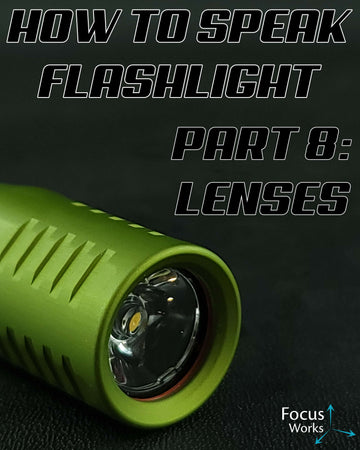Lets start talking about the business end of lights.
You’ve likely heard terms like lens, emitter, optic, reflector, MCPCB etc. so lets start breaking those down.
Lets start with lenses because it’s easy and I don’t feel like putting a ton of effort into this weeks blog 😂
If you look at the very front of a flashlight there will be a window on the front. That’s the lens.
Depending on the quality of the light, the lens can be made of a bunch of different materials.
Lowest on the scale is plastic. Now plastic isn’t a terrible choice if all you’re thinking about is covering the end. Polycarbonate (lenses for glasses and safety glasses are often polycarbonate) can be optically clear and an excellent choice but is going to be really bad for scratching and not very heat resistant. Some really high powered lights can melt plastic lenses.
Next up would be glass lenses. There’s all kinds of glass but quartz glass is what I use in some of my lights.
I use it for a couple reasons.
It has EXTREMELY good thermal shock resistance. Meaning it can be heated up cooled rapidly without breaking. Think getting your light so hot you cant hang onto it and then plunging it underwater to cool down. No problem.
Most importantly it’s transparent to just about all forms of light, both visible and invisible.
Drawbacks? It’s not terribly strong on it’s own. When I drop a quartz lens when assembling a light it generally ends up breaking. When it’s backed up by an optic in a light however it’s perfectly strong. I’ve had no problems at all with them. My F2 lights use quartz glass lenses.
Next for the premium option. Sapphire…
Got an opinion on lenses or lights? Let us know in the comments
